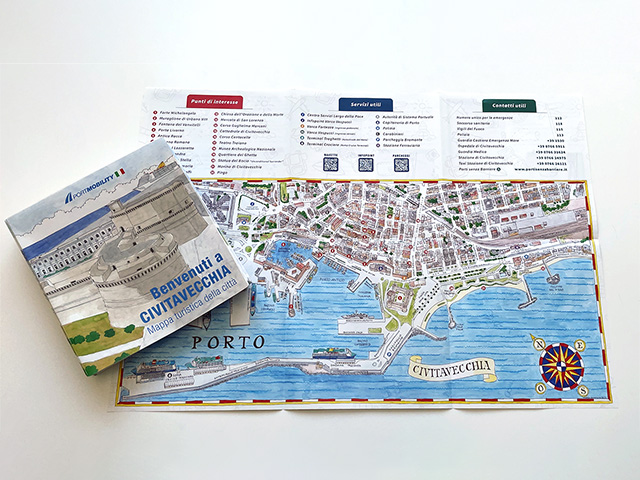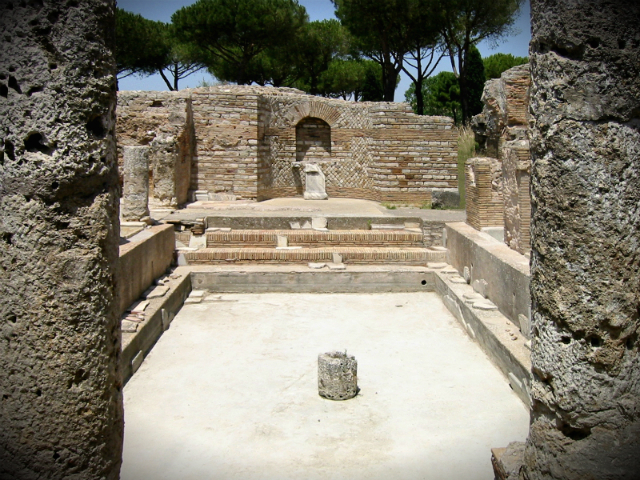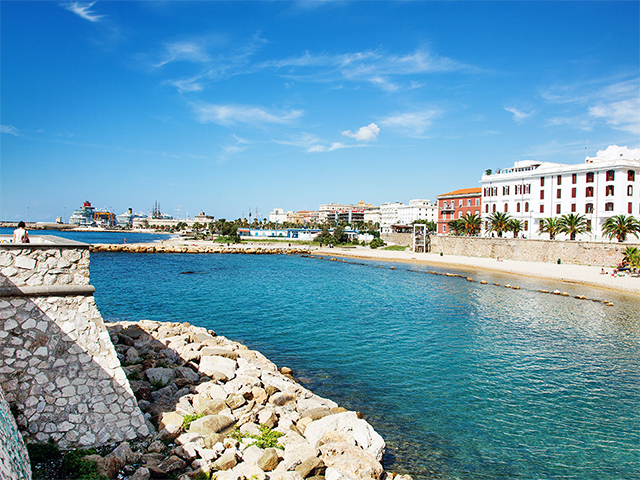Ancient Ruins of Monterano
From the Ruins of ancient Monterano to the Diosilla waterfall: history, directions and useful information about one among the most suggestive places of the Lazio MaremmaLess than 1 hour by car away from Civitavecchia, halfway between the Tolfa Mountains and the Bracciano lake are the Ruins of Ancient Monterano, one among the most suggestive places in the Lazio Maremma.
Plunged into the green of the Nature Reserve with the same name, the ruins of this lost city are ideal to spend a short break away from the city along with the whole family.
In addition, the fact that it is close to Rome and it has an incredible scenographic beauty, this place have been chosen several times as cinema set for important films such as Ben-Hur, Brancaleone at the Crusades, Cops and Robbers and The Marquis of Grillo.
If what we have said has awaken your curiosity, then you just need to follow the path that will take you to discover this extraordinary ghost city!
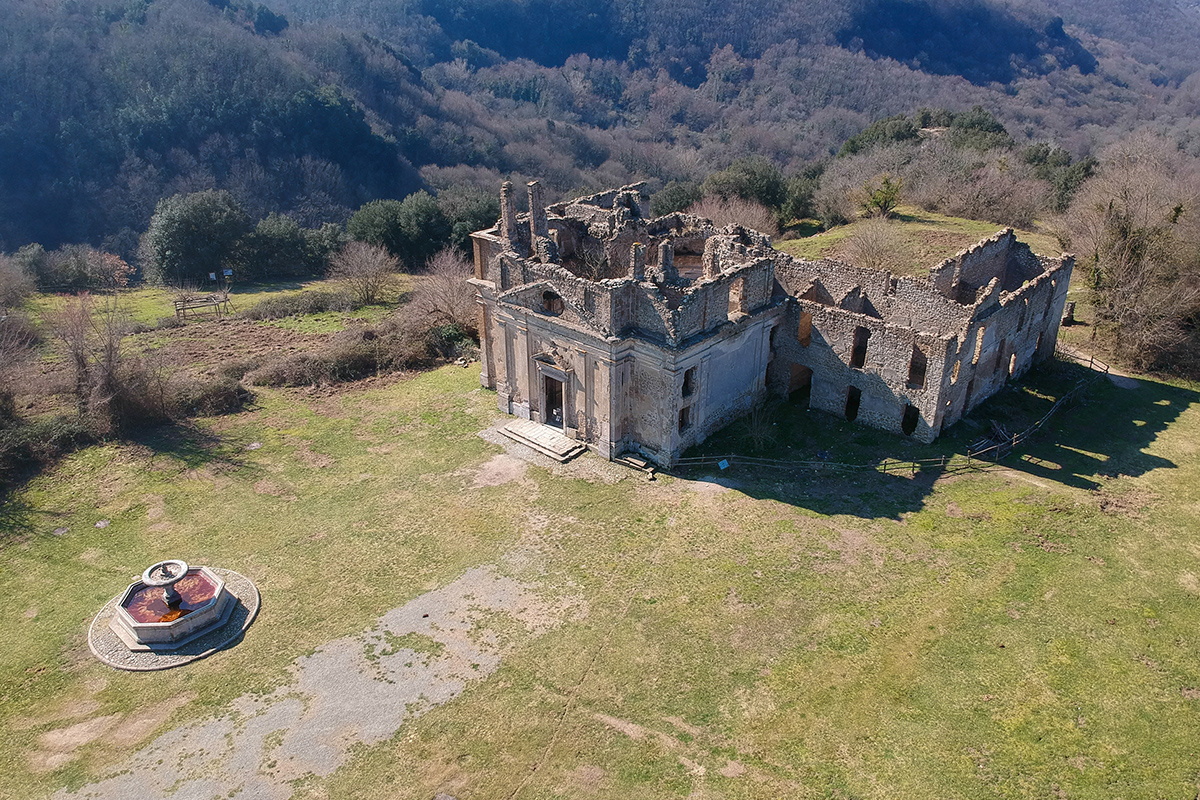
The ruins of ancient Monterano are a suggestive place without time
ANTICA MONTERANO: A LITTLE BIT OF HISTORY
Monterano, born in Etruscan times on top of a small tuff hill, still preserves the traces of the past. From Etruscans to ancient Romans who raised here many buildings and expanded the road network, the city fell afterwards under Langobardic domination and was drastically destroyed.
During the Middle Ages, instead, Monterano was reborn under the nudge of the Bishop and the inhabitants of the neighboring Forum Clodii who (in the 6th century) tired of the continuous Germanic incursions, left their lands and moved to Monterano building new roads, but especially, building sold defensive walls.
The city was then repopulated again and it became episcopal polity and one of the most important vilalges in the area of the Sabatini Mounts. In 1300 it was first feud of the Anguillara and after ducate of some papal families such as the Orsini or the Altieri.
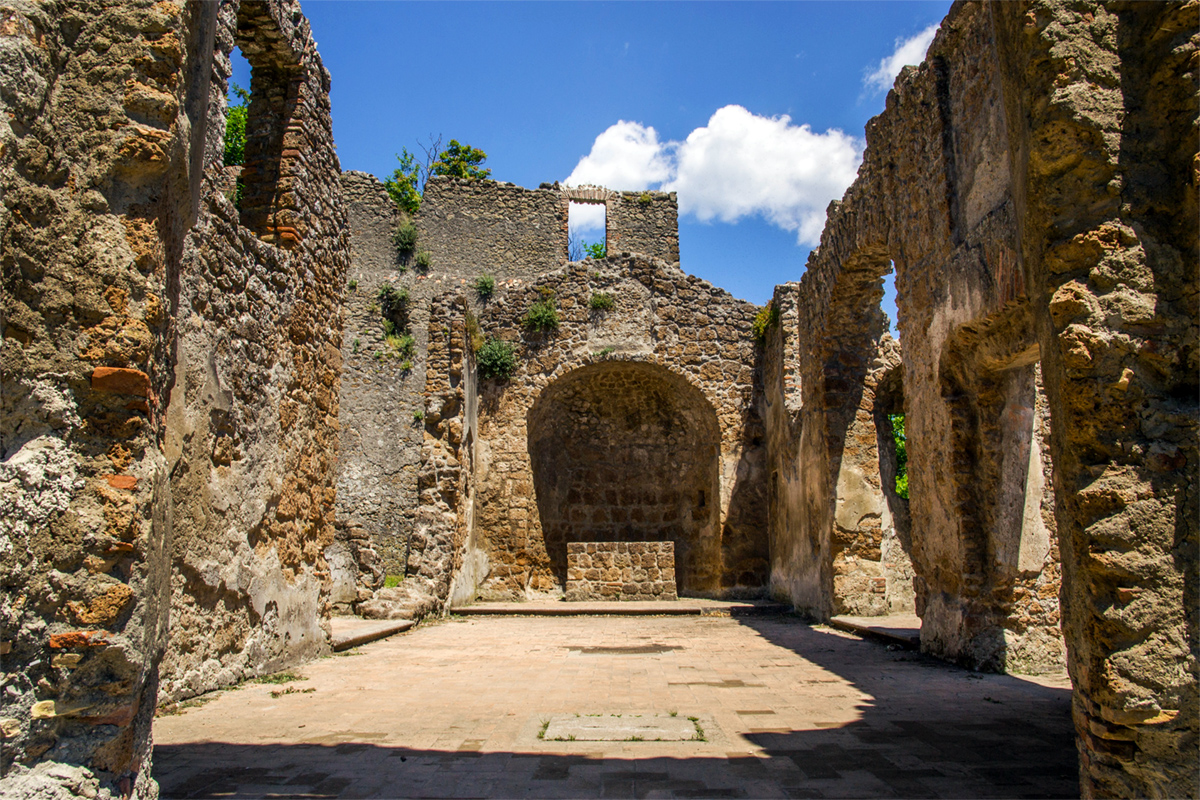
Monterano - Ruins of the old village
It was during the Altieri ducate period (first half of the 17th century) when Monterano reached its maximum splendour. This blooming development was due specially to Emilio Bonaventura Altieri, who was elected Pope at the age of 80, under the name of Pope Clemens X and commissioned Gian Lorenzo Bernini to build many works for Monterano.
The artist projected the Church and Cloister of San Bonaventura and the facade of the ducal palace with the splendid fountain of the Lion, which has become symbol of the city.
When the Pope died, Monterano went under the rule of the Papal States to the Roman Republic and from this to the Bourbon Kingdom, starting a slow and relentless period of decline that culminated in 1770 with a malaria epidemic and finally with the assault by the French army, which made the whole population scape.
HOW TO GET TO MONTERANO
Ancient Monterano is west to the Bracciano Lake, about 2 km away from Canale Monterano and 7 km away from the Stigliano Baths. The ruins are on top of a tuff hill enclosed between to gorges formed by the Mignone river and the Bicione creek, between the Mounts of Tolfa and the Mounts Sabatini.
Once at Canale Monterano you will only have to follow the signs to the Nature Reserve until getting to an open space where you can park your car. From here, you can only continue on foot along a 200 meter-long path.
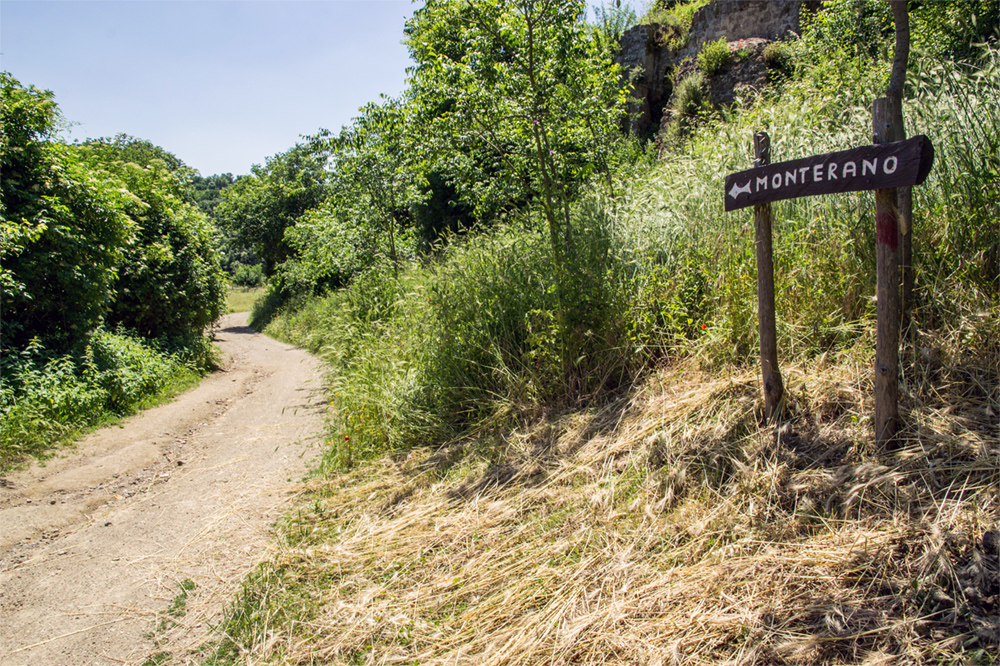
The path that leads to Monterano
You will realise you have arrived as soon as you catch sight of the first ruins with the fountain and the Roman aqueduct that welcome you!
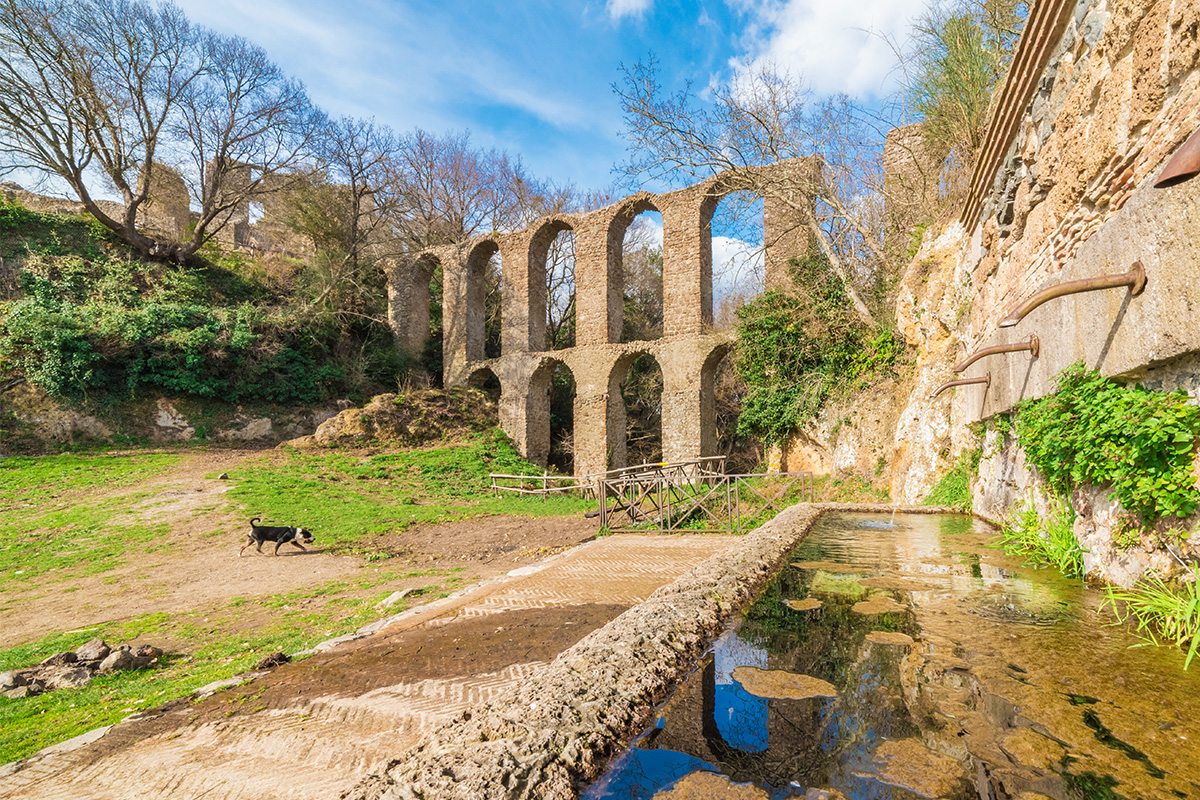
Monterano - Remains of the aqueduct
Among the lonely ruins of the village, the thick and tangled vegetation interrupted by wide valleys where flocks of sheep, cows and horses graze, streems and ast waterfalls prepget ready to go through a landscape that seems to be cut out of a fantasy film.
It goes without saying that photographers, videomakers and any kind of artist can litterally go wild finding inspiration in this fantastical union of the unspoilt greenery of nature and the village ruins.
WHAT TO SEE AMONG THE RUINS OF MONTERANO
Among the ruins you can admire some monuments belonging to many historic periods: from Etruscan tombs at the feet of the hill to the big Roman aqueduct, passing through the Medieval Castle -which became afterwards the Baronial Palace- and, finally, to the great Cloister of San Bonaventura, from Renaissance times.
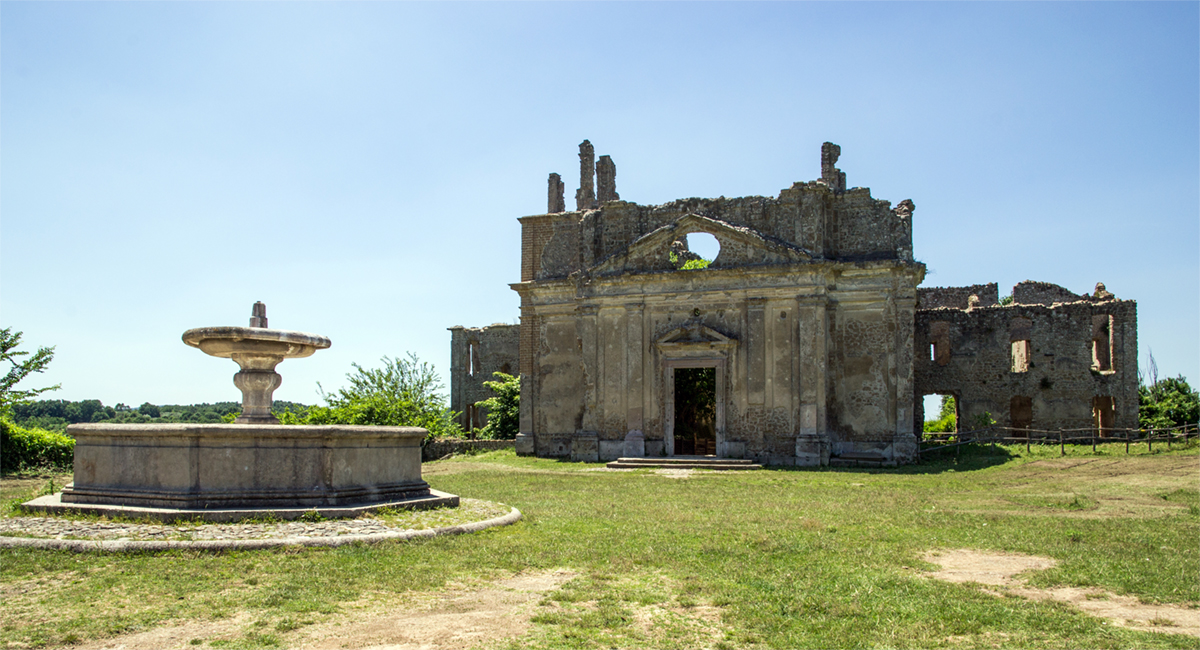
Monterano - Bernini's fountain and the Cloister of San Bonaventura
In the big open space in front of the church is the replica of the beautiful fountain with an octagocal base by Bernini (the original is in Piazza del Campo, in Canale Monterano) while on one facede of the Baronal Palace stands the fountain with the Lion Statue (also this a replica, the original is in fact preserved in the town building of Canale Monterano).
The fountain, known as "Capricciosissima", was made by Bernini taking advantage of the rocky foundation of the structure, with the statue of the Lion on top the wall, represented in the act of shaking the rock with a paw to make the water emanate.
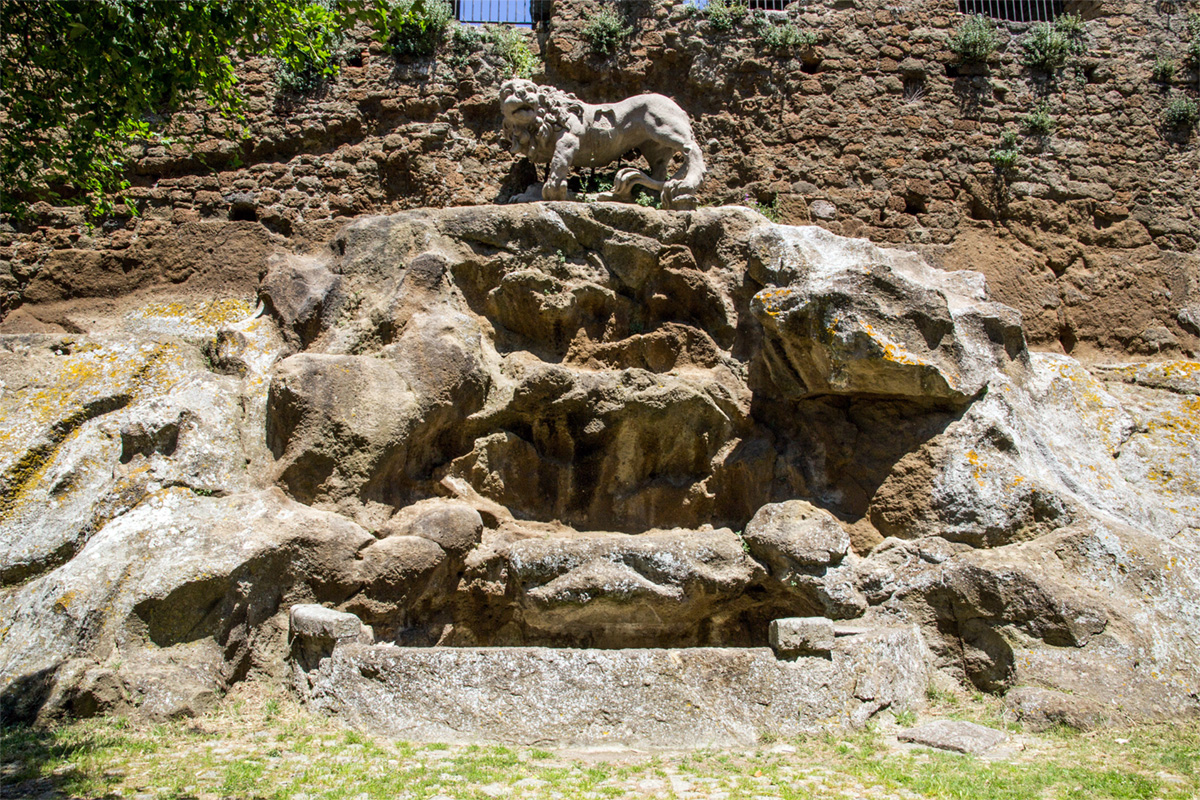
Monterano - Bernini's Lion on the Ducal Palace
Finally, the ruins of the Church of San Rocco, the Gradella Gate (one of the three gates in Monterano) and the Via Gradella, the cathedral bell tower, some bastions north to the vilalge, the remains of the entrance of a tavern and some houses surrounding the palace.
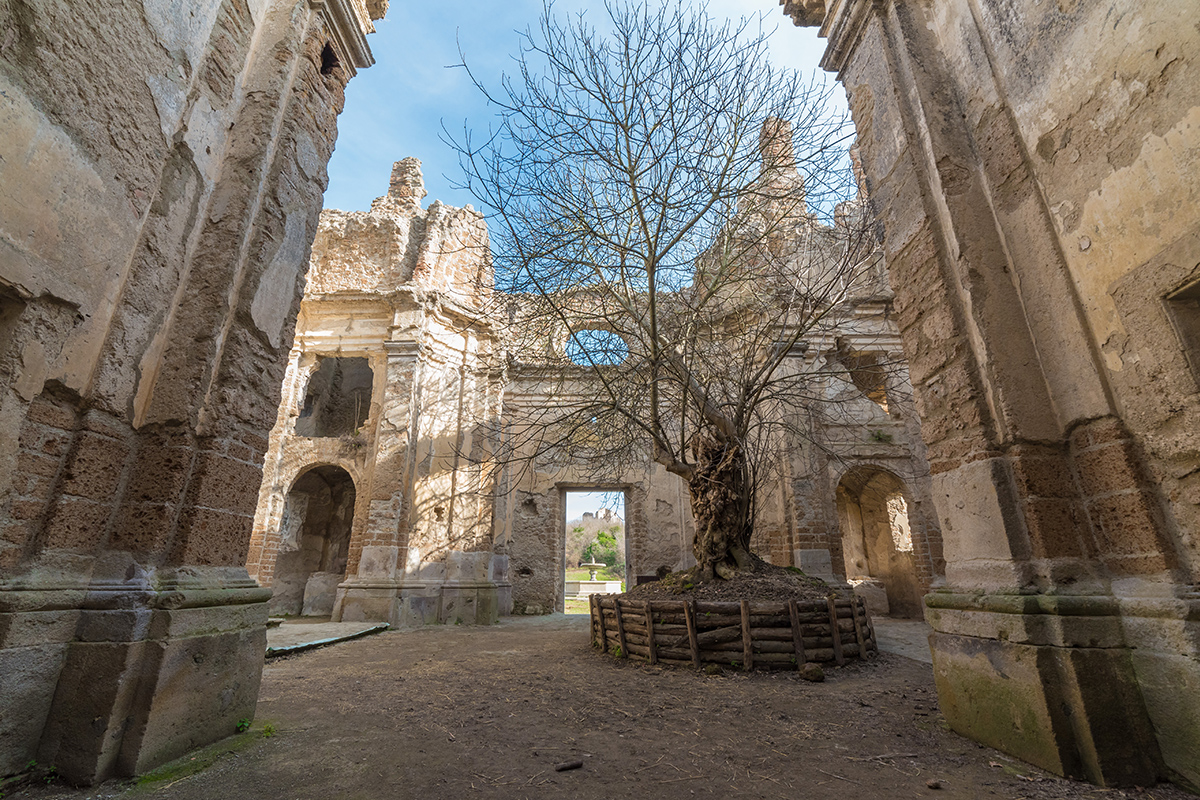
Monterano - The suggestive tree inside the Church of San Bonaventura
THE DIOSILLA WATERFALL
Inside the Monterano Nature Reserve is also an important geological site where you can admire the Diosilla waterfall known for the suggestive colour of its water that goes from sulphur yellow to blue, to white, due to the sulphur.
The waterfall is at the south-east boundary of the reserve and to get there you will only have to follow a path signed with a red dotted line.
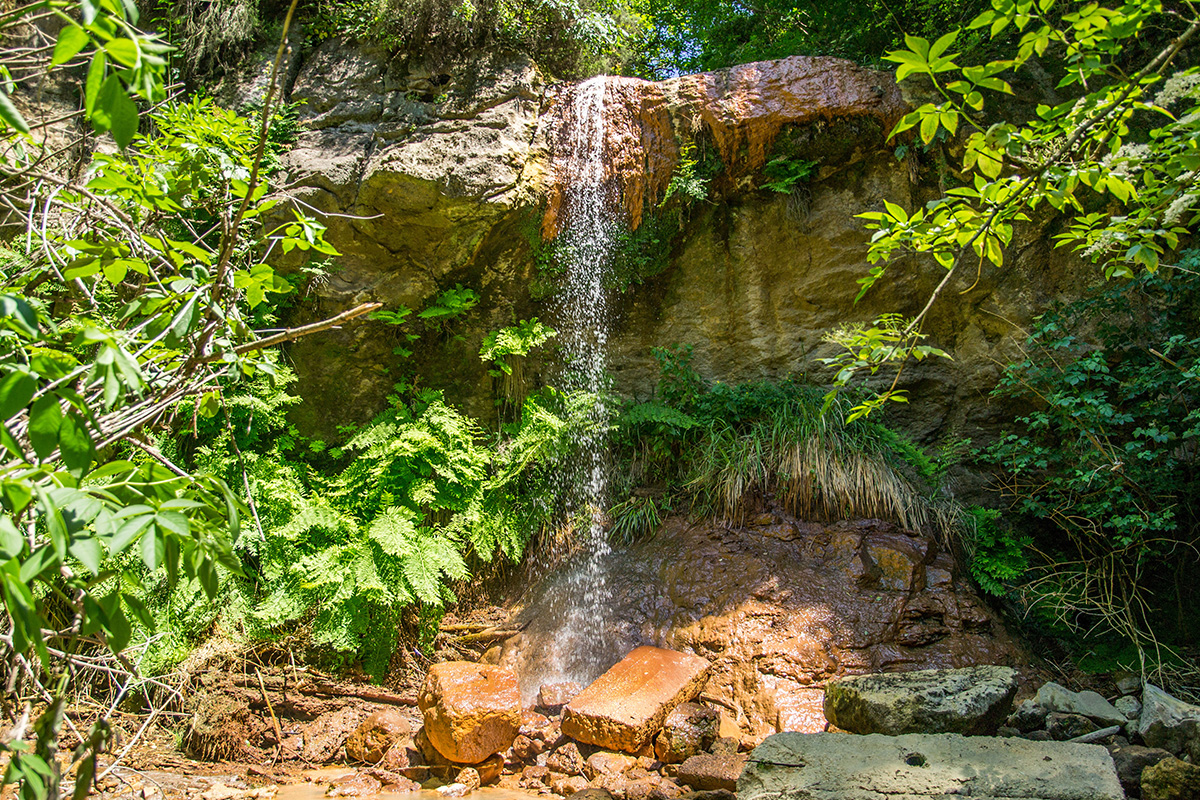
Monterano - Diosilla Waterfall
Following the route, you will walk along the Bicione creek and venturing into the thick vegetation, the path winds among suggestive routes through tuff walls and archs made of natural rock.
All around, the luxuriant oak forest is characterized by the presence of rare fern species. Reaching a tuff grotto, used in the past as a sulphur mine, and crossing a small wood bridge, you will get, finally, to an open space in front of the so-called sulphur grotto, over which burst some sources of sulphur water.
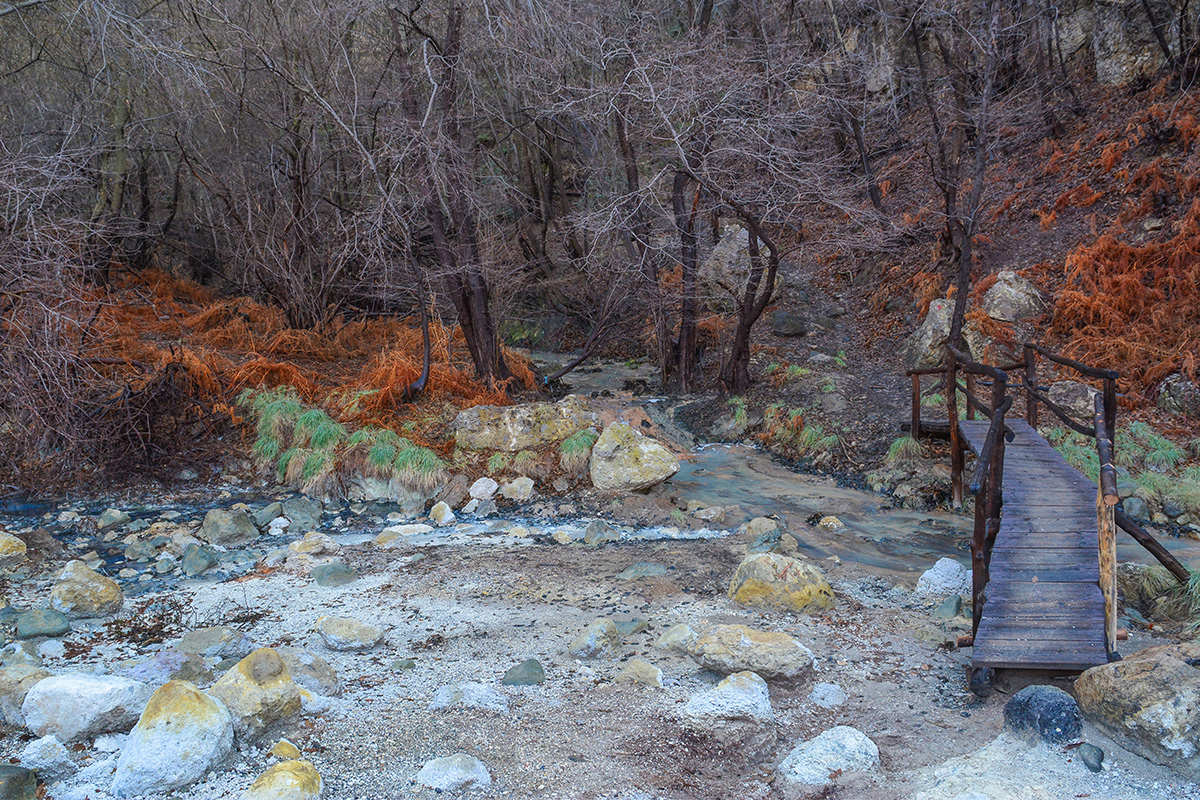
Monterano - The Solfatara
SOME TIPS: If you don't want to miss any of the wonders that nature has to offer, out advice is to start the visit right from the parking area of the Diosilla and to reach the ruins following first the red itinerary and then the narrow road that from the solfatara leads to the Monterano hill (3500 meters).
If you are not passionate about trekking and you are willing to visit exclusively the ruins, go directly to the Monterano parking area and continue on foot for about 200 meters.
Useful information
Ancient Ruins of Canale Monterano
- HOW TO GET THERE
The ruins of Monterano can be reached following the Strada Antica Monterano that starts at the beginning of the town Canale Monterano and ends close to the archeological site. To trekking passionates we recommend to follow directions to the parking area of the Diosilla waterfall where the itinerary starts, following the red route.
The town of Canale Monterano is also connected with Cotral buses.
- PRICES
Free access



 PORT MOBILITY CIVITAVECCHIA
PORT MOBILITY CIVITAVECCHIA








